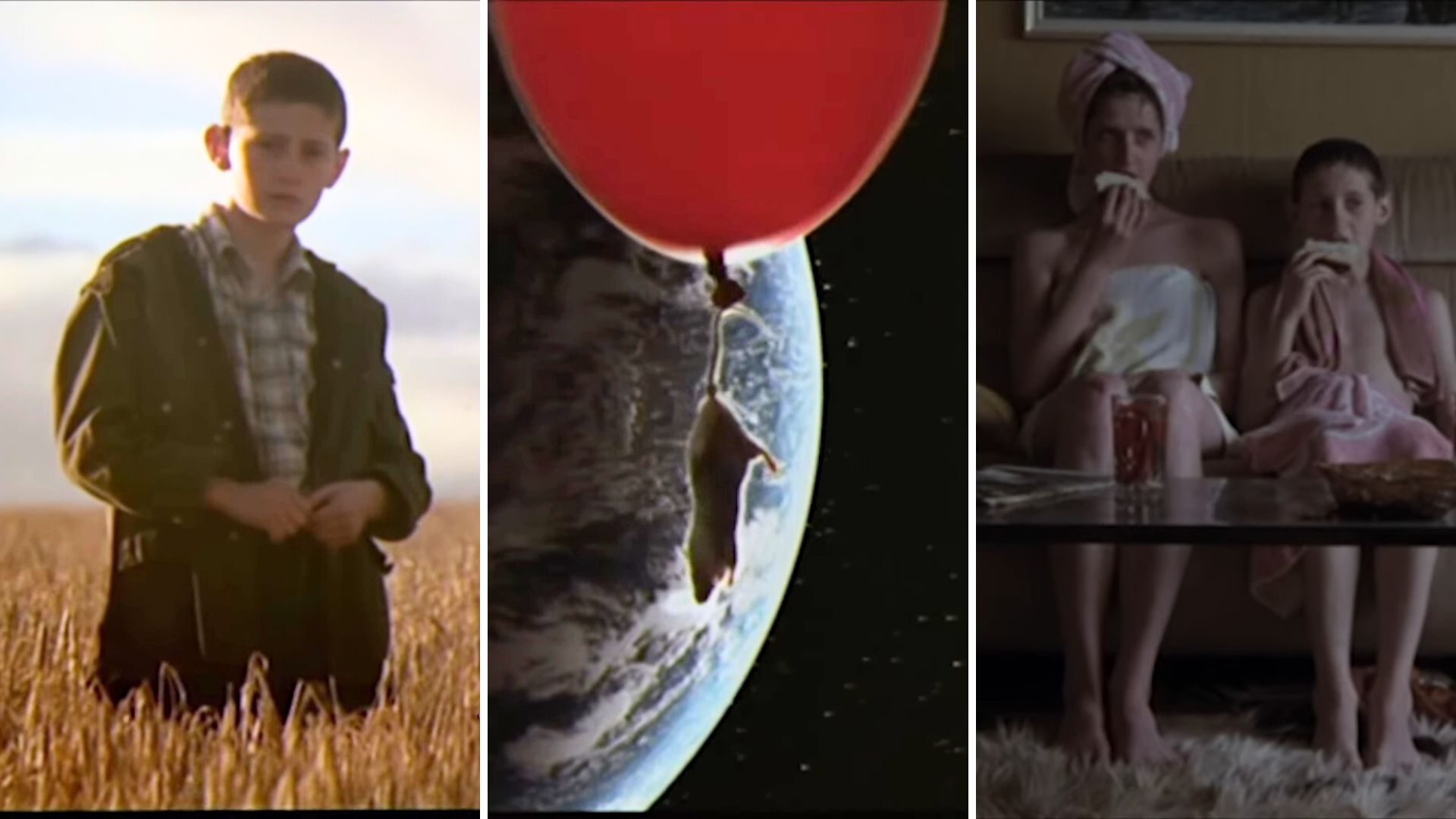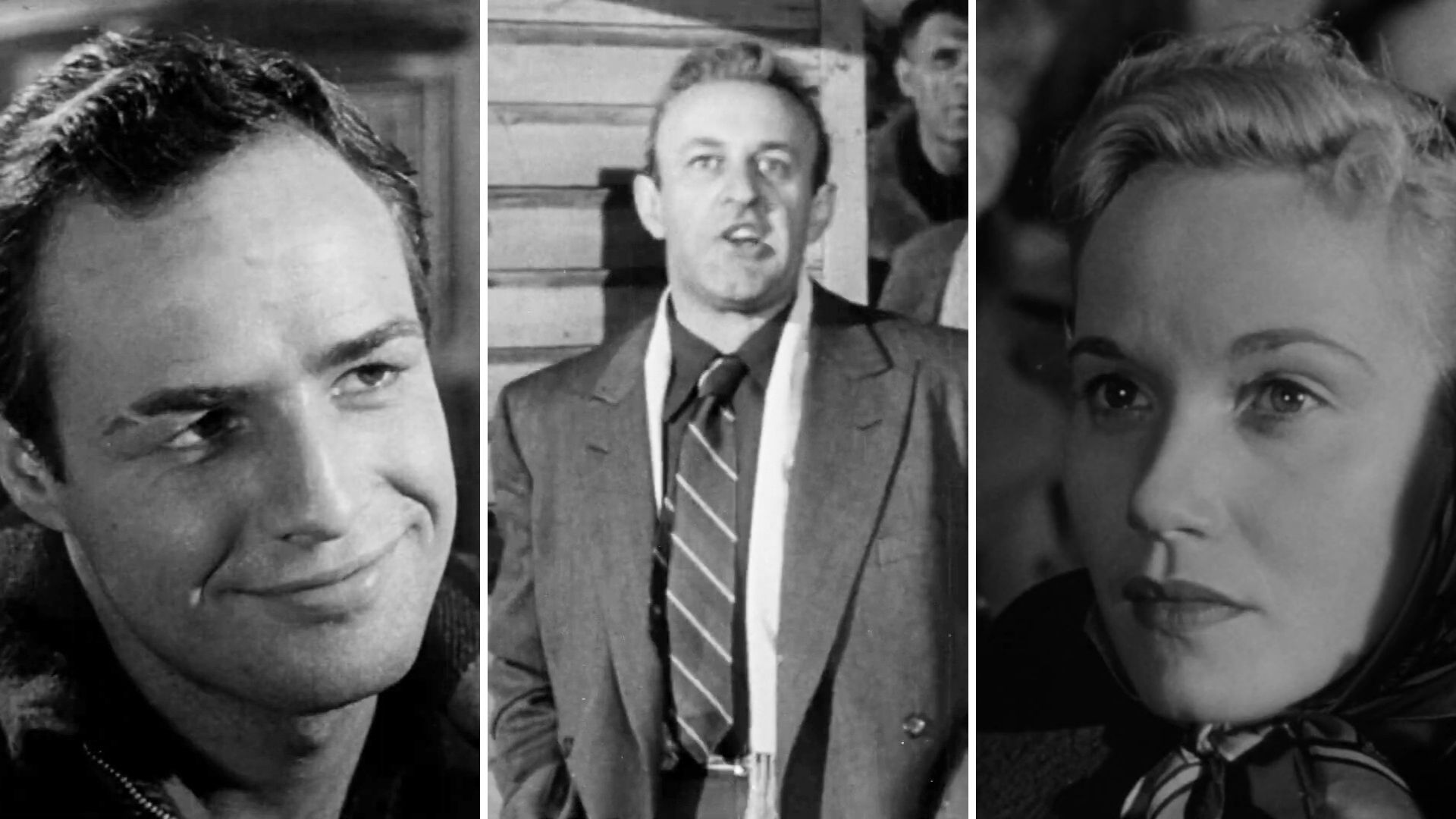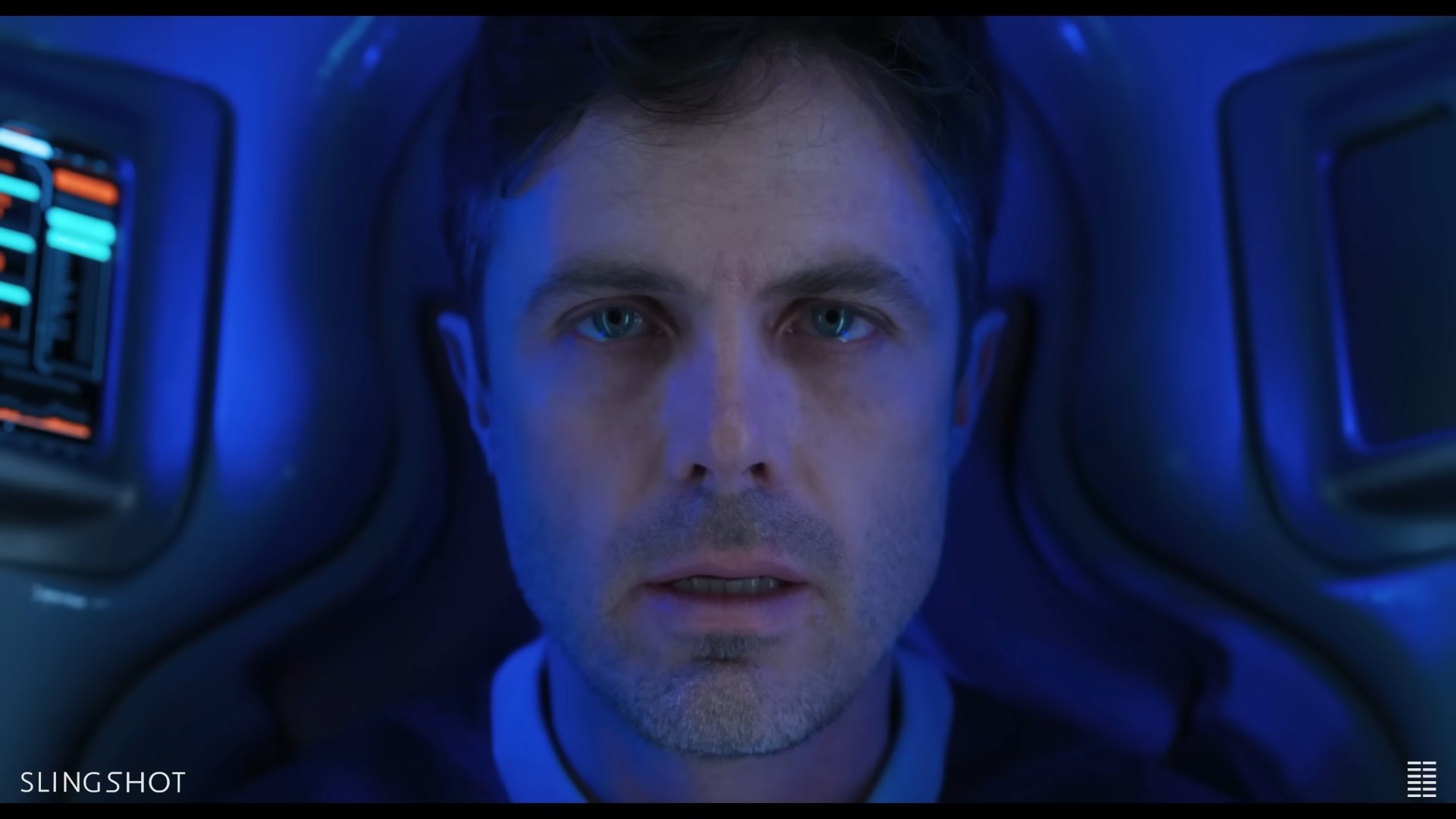
Slingshot is the newest film from Swedish director Mikael Hafstrom. Hafstrom has helmed a handful of mid-budget films like 2011’s The Rite and the Stephen King adaptation 1408. This time Hafstrom tells a story of isolation and paranoia in the one place where no one can hear you scream.
Casey Affleck leads this sci-fi thriller and he is the best part of the film. The rest of the cast is rounded out by Laurence Fishburne, Tomer Kapon, and Emily Beecham and while they all deliver fine performances, it’s not enough to save this head-scratching space thriller.
Slingshot Towards the Moon of Titan
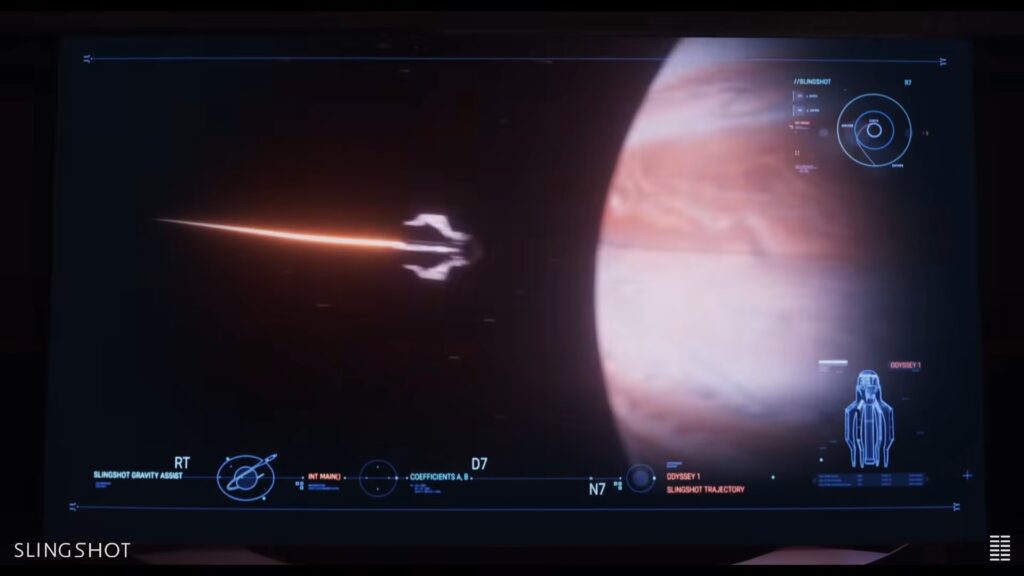
Slingshot tells a dual narrative story. The first plot deals with Casey Affleck as astronaut John on a mission to the moon Titan. The rest of his crew includes Laurence Fishburn as Captain Franks and Tomer Capone as Nash. Their reasoning for going to Titan is barely explored and basically just explained away as climate change. The second narrative deals with a romantic relationship John forms with a colleague at NASA. A beautiful career-driven woman named Zoe Morgan.
These earth-set romance sections are intercut during the moments John and his crew are asleep in stasis aboard the Odyssey 1 en route to Titan. They are given heavy sedation drugs to put them to sleep and then awoken every 90 days to perform various routine checks on their ship. Each time they wake something new seems to be amiss and each crew member deals with the conflict in increasingly different ways.
Paranoia and Dealing With the Unknown
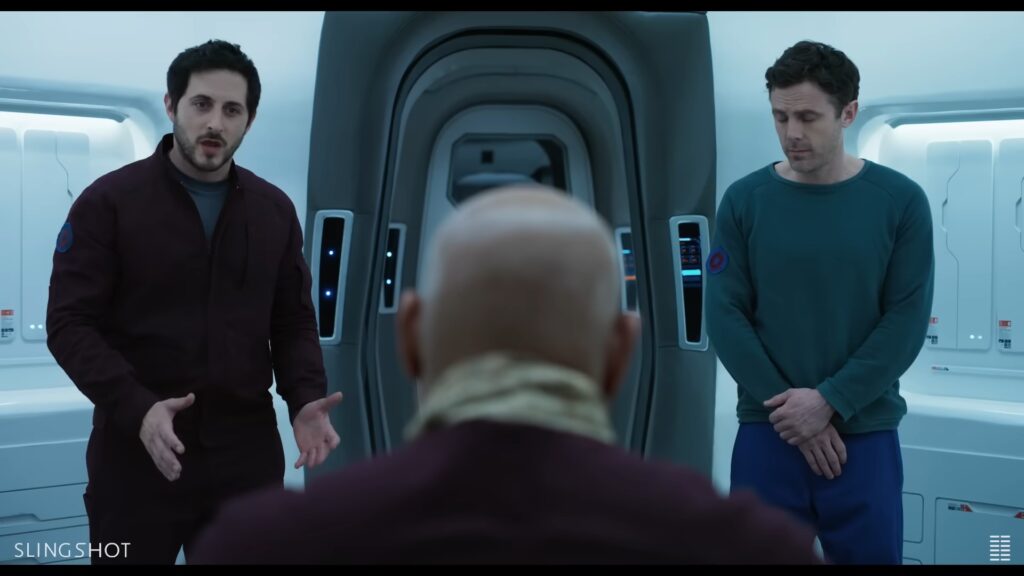
Slingshot succeeds well enough in telling its story even if it goes on for far too long. The film is only an hour and forty-eight minutes long but it hangs desperately on reveals that come late in the film. The majority of the film’s runtime is spent as set dressing leading up to major reveals. It’s a recipe that would have worked great as a 50-minute Black Mirror episode but wears thin as a feature.
Casey Affleck does a strong job leading the cast and embodying the fear associated with isolation. Affleck’s character John seems to be losing his grip on reality and the audience is never sure if this is from the isolation, the sedative drugs, or something else entirely. His fellow astronauts embody two opposite personalities throughout the film. Laurence Fishburn is a cool and in control captain while Tomer Kapon’s Nash loses it at the first sign of trouble. Casey Affleck must then act as the glue for the team while struggling with visions and fears himself. It’s a smart premise but one that’s fully realized in the first forty-five minutes.
Keeping the Audience Guessing
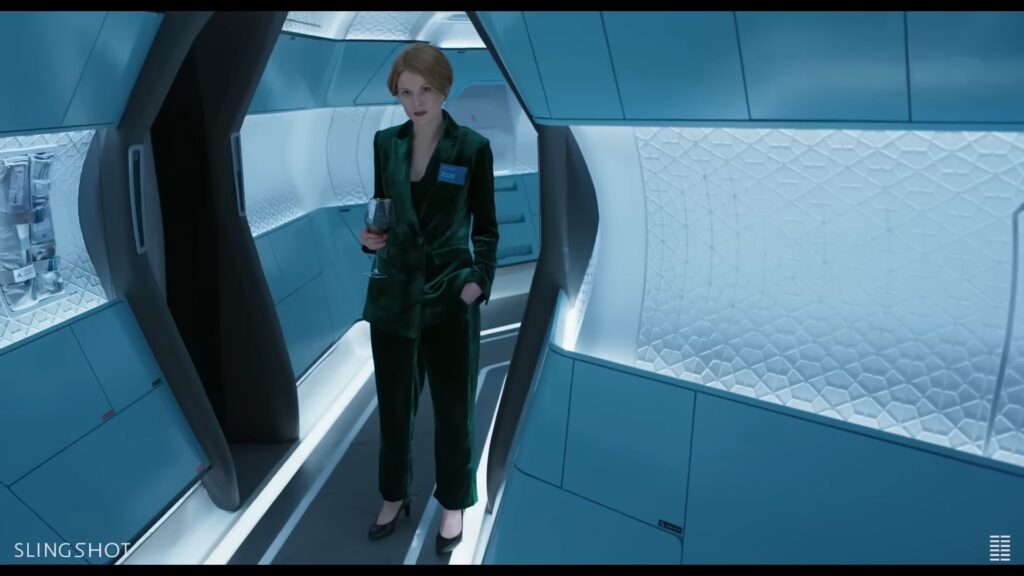
It becomes clear about halfway through that not everything we are seeing is real. Affleck is an unreliable narrator and there are too many unexplained phenomena happening on board for it to just be coincidence. It’s a compelling conflict but one that the film can’t resolve until it reveals its twist. Once you know a twist is coming, the rest of the movie drags while you wait for it. And Slingshot makes you wait a long time.
Once you establish that something is amiss, it becomes impossible to determine what that is. The film doesn’t really drop any clues. It doesn’t want you to figure everything out. It wants you to enjoy the ride and find out naturally through exposition dumps at the end. All three of it’s endings.
The Final Act in The Final Frontier
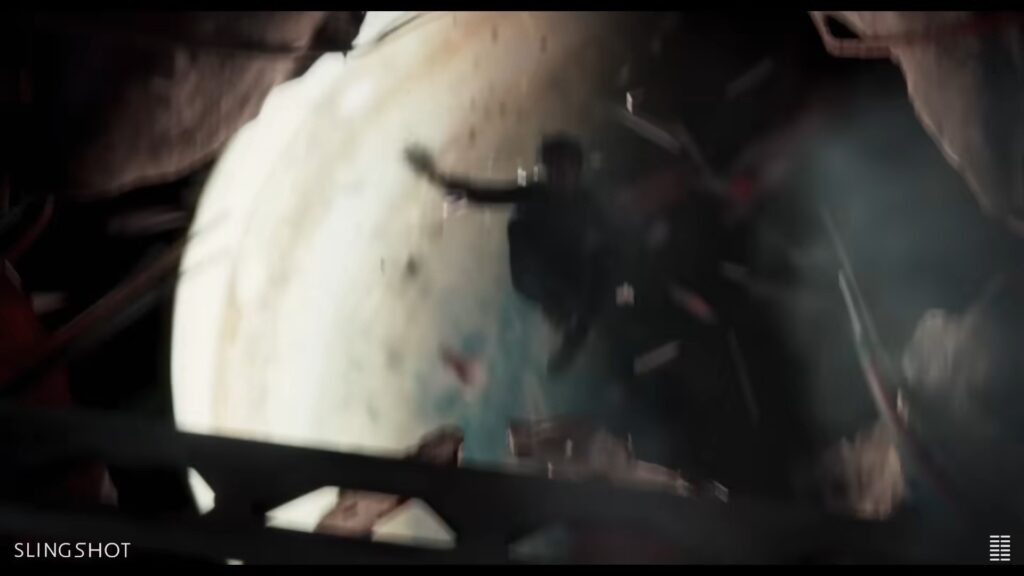
Slingshot doesn’t show its hand until the third act. John is beginning to question everything happening on the ship and at home. The film does little time lingering here and instead delivers twist after twist in rapid succession leaving the audience just as confused as Ben’s younger brother.
This would be fine if the film left its ending ambiguous. But as it plays out the film delivers three different endings, each one a worse decision than the last. Rather than leaving the audience to ponder the true story, the film purposefully wrong-foots the audience until we have a definitive answer that is less satisfying and makes less sense than the subsequent endings we received before.
Realizing Themes in Slingshot
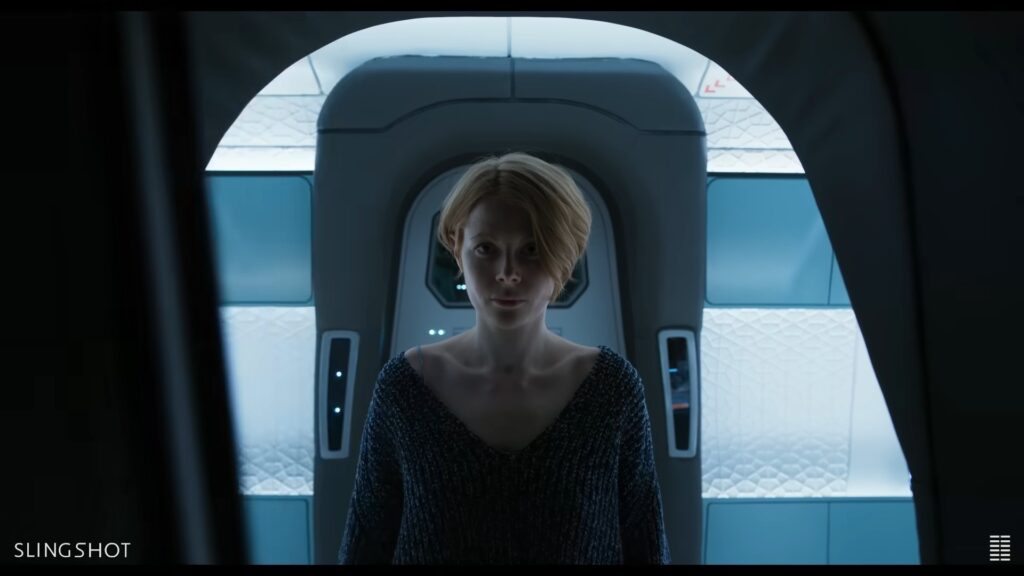
Early on in the film engineer Nash has a conversation with John attempting to relay what’s going on with their doomed spacecraft. Nash is falling further into paranoia and is giving John explanations that are improbable but cannot be disproven. John calls him out on this and says that the answer might as well be sneaky little gremlins sabotaging the ship. It’s outlandish but impossible to disprove. This conversation succinctly sums up the entire theme of Slingshot.
As things get increasingly worse during John’s journey, he constantly finds outlandish yet impossible to disprove solutions for everything that is happening. The film finally ends on a dour note that undermines most of the twists it revealed a half hour earlier. It’s not a terrible ending even if it’s worse than the ambiguous or fantastical one. It just takes so long to get to the ending that when we finally arrive it feels like a waste. If this had been a short or an episode of Black Mirror it would have been great but the execution here is just okay. Slingshot is a 6 for me but I think there is an audience out there for the film. Casey Affleck does a great job and the film does provide a deeper meaning. It just takes a long time to get there.








